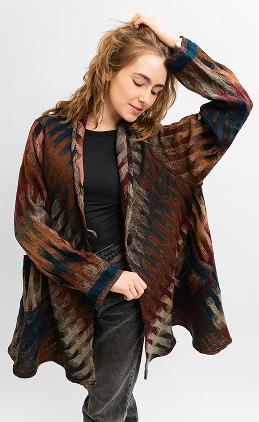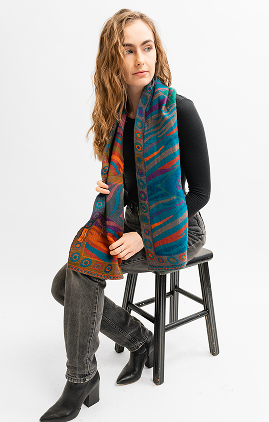Introduction
Australian merino wool clothing has grown incredibly popular for its supreme softness, breathability, and natural comfort, especially in women's wool clothing collections. However, many people often confuse how to care for Australian merino wool garments compared to regular wool, which leads to unintended damage, shrinking, or rough textures in their favorite pieces. Whether you own elegant ladies merino wool or traditional wool garments, understanding and respecting the distinct care needs for each is essential to preserving their quality and longevity. This comprehensive guide will walk you through the differences in caring for merino wool versus regular wool, equip you with practical tips, and help you confidently maintain your wool clothing for women to look and feel its best season after season.
Understanding the Difference Between Merino Wool and Regular Wool
Australian merino wool is sourced from Merino sheep known for the extreme fineness and softness of their fibers. Each fiber is thinner than a human hair, giving merino wool garments a smooth, almost silky feel against the skin. This makes merino wool clothing for women exceptionally comfortable even when worn directly. Its unique fiber structure also contributes to excellent breathability, moisture-wicking, and natural odor resistance, making it ideal for activewear as well as casual and formal clothing.
On the other hand, regular wool typically comes from breeds with coarser and thicker fibers. It provides robust insulation, but these fibers can feel rougher and sometimes itchy, which requires a thicker weave and different care to maintain the garment’s shape and texture. Regular wool garments might not have the same level of breathability or resilience as merino but still offer excellent warmth and durability.
These fundamental fiber differences explain why ladies merino wool requires more delicate treatment to preserve its softness and elasticity, whereas regular wool can often handle heavier wear but needs specific attention to prevent felting or shrinking.
How to Wash Merino Wool Clothing for Women
Proper washing techniques for Merino wool clothing are crucial to maintaining the integrity of merino wool garments. To best care for merino wool clothing:
• Hand wash or dry clean only: Machine washing can be risky, even on gentle cycles. Hand washing in cold water with a mild detergent formulated for wool is safest.
• Use gentle detergents: Avoid bleach and fabric softeners, as these can break down the fine merino fibers.
• Do not wring: Instead, gently press out excess water without stretching the fabric.
• Lay flat to dry: Avoid putting merino wool clothing in the dryer. Lay garments flat on a clean towel in their natural shape to prevent distortion or shrinkage.
Following these instructions keeps your merino wool garments like the Classic Cape~Morocco Brick looking magnificent year after year. Its reversible boiled wool structure especially benefits from such gentle care to maintain softness and drape.
Caring for Regular Wool Garments

While regular wool is generally more resilient than merino, it still demands careful washing to avoid damage:
• Hand washing or dry cleaning: Hot water and agitation can cause felting, where fibers mat tightly and shrink the fabric.
• Use cold or lukewarm water: Hot water breaks the protein bonds in wool fibers, so avoid it at all costs.
• Avoid machine drying: Like merino, regular wool should be dried flat away from direct heat to retain its shape.
• Proper storage and moth prevention: Regular wool garments can attract moths, so storing them with natural repellents such as cedar chips is recommended.
These care tips protect your wool collection and ensure that your warm, traditional pieces last for generations.
Stain Removal and Odor Control in Wool Clothing
One standout benefit of Australian merino wool clothing for women is its natural odor resistance. Thanks to moisture-wicking fibers, merino wool reduces sweat buildup, allowing wearers to use garments multiple times before washing. This feature also helps in controlling odors without over-washing the fabric, which preserves its lifespan.
If stains occur, it’s important to act quickly and gently:
• Treat spots using cool water and a mild detergent designed for wool.
• Avoid harsh stain removers or bleach, which can degrade fibers.
• Blot rather than rub stains to prevent damaging the delicate wool.
Regular wool generally needs more frequent cleaning to manage odors and stains due to a denser fiber structure. However, the same caution with gentle detergents and cool water applies to both wool types.
Best Practices for Storing Merino Wool and Regular Wool Clothes
Proper storage significantly impacts the longevity of both merino and regular wool garments:
• Ensure garments are clean and dry: Wool left with dirt or moisture can attract moths and develop mildew.
• Use breathable storage: Store wool items in cotton or linen garment bags or boxes instead of plastic, which traps moisture.
• Natural moth repellents: Cedar chips or lavender sachets help deter moths without harsh chemicals.
• Avoid overcrowding: Allow space for air circulation to prevent creasing and fiber compression.
This approach works well for structured pieces, such as the elegant Neck Scarf~Citron, ensuring the fabric remains crisp, fresh, and ready for wear.
Where to Find the Best Merino Wool Clothing

If you are in the market to invest in premium quality merino wool garments, searching for trusted brands and collections is essential. The Samaya Merino collection offers an exquisite array of merino wool clothing for women, from cozy reversible ponchos to stylish boiled wool scarves that suit both casual and dressy occasions. Watch for occasional merino wool women's clothing sales to avail top-quality products at reduced prices while enjoying the luxury and benefits of merino wool.
FAQs
Q1: How should I wash merino wool garments to avoid shrinking?
A1: Always hand wash or dry clean merino wool clothing using mild detergent and cold water. Lay flat to dry and avoid tumbling or hot water, which can cause shrinking.
Q2: Can regular wool garments be machine washed?
A2: Machine washing is generally not recommended for regular wool as it can cause felting and shrinkage. Hand washing or professional dry cleaning is preferred.
Q3: How often can I wear merino wool clothing before washing?
A3: Merino wool's excellent odor resistance allows you to wear it several times before washing, unlike regular wool that may require more frequent cleaning.
Q4: What’s the best way to store wool clothing offseason?
A4: Store clean, dry wool garments in breathable bags or boxes with natural moth repellents like cedar. Avoid plastic bags to prevent moisture buildup.
Conclusion
Merino wool and regular wool have distinct fiber properties demanding different care approaches to keep your garments comfortable, durable, and beautiful. Merino wool clothing for women is delicate but rewarding when washed gently with mild detergent, cold water, and air dried flat. Regular wool garments, while sturdier, still benefit from cautious washing to prevent felting and shrinking. Applying smart stain removal and storage habits will extend the life of all your women's wool clothing. For trusted quality and style, explore premium Australian merino wool collections like SamayaMerino and cherish the unmatched functionality and elegance of woolwear.
By embracing these best practices, you can confidently enjoy the unique benefits of both merino wool garments and traditional wool, turning your wool pieces into timeless wardrobe staples that blend style, comfort, and sustainability.











